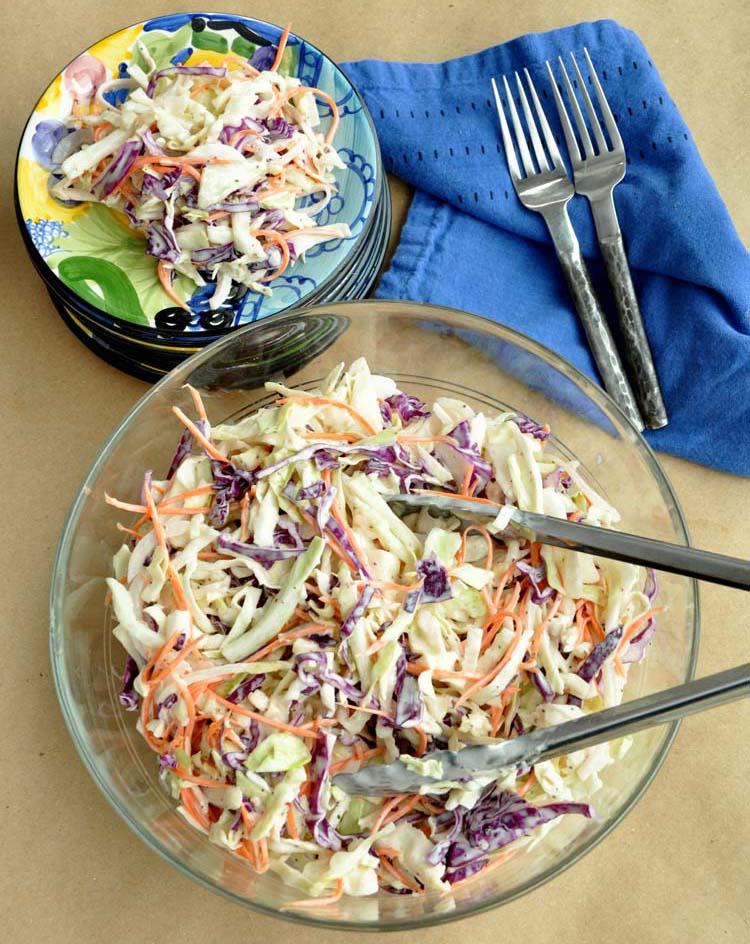
Labor Day is soon upon us and with it the last hurrah of summer. It’s time for one last picnic, one last barbeque, and one last salad, before Autumn sets in and with it the warming soups and stews of colder weather.
What better to go with that picnic or barbeque than the classic coleslaw? Mix up some crisp cabbage with a creamy and tangy dressing to offset that pulled pork, sticky ribs or barbecued chicken.
The origin of coleslaw comes from the Dutch word koolsla which literally translates to cabbage salad. Dutch settlers brought cabbage to the new world with them and settled in New Amsterdam which eventually became New York’s Manhattan. Coleslaw’s long history in the US makes it an American dish in its own right.
Tip for crisp coleslaw: Cabbage contains a lot of water and once dressed will exude liquid and make the salad soggy if left to sit too long. One option is to “purge” the cabbage by tossing it in salt and allowing it sit for 10 minutes and then rinsing it. This process forces some of the water out of the cabbage and also gives it a softer texture. If you like the crispness of raw cabbage and are planning on eating the salad right away then there is no need to purge the cabbage.
Ingredients
- 1 pound green head cabbage, shredded (about 8 cups)
- 4 ounces red cabbage shredded (about 2 cups)
- 1 large carrot, peeled and shredded (about 1 cup)
- ½ cup sweet white onion, thinly sliced
- ¾ cup mayonnaise
- 3 tablespoons apple cider vinegar
- 1 tablespoon plus 1 teaspoon sugar
- 1 teaspoon celery seed
- 1 teaspoon kosher salt
- ½ teaspoon freshly ground black pepper
Instructions
- Thinly slice the both the green and the red cabbage and place in a large bowl.
- Optional: Purge the cabbage. Combine the cabbage in the bowl with 1 tablespoon of kosher salt and allow it to sit for ten minutes to purge some of its water and soften the cabbage. Rinse well in a colander. Dunk the cabbage in ice water to crisp it up, drain, and spin in a salad spinner to remove excess moisture.
- Shred the carrot on a box grater or mandolin slicer with the medium toothed insert. Cut the onion in half and thinly slice into half rounds, separating the pieces.
- Combine the cabbage, carrot and onion in a large bowl.
- In a small bowl, whisk together the mayonnaise, vinegar, sugar, celery seed, salt and pepper until smooth.
- Slowly add the dressing to the cabbage mixture until you have the desired about of dressing. If you have purged the cabbage you may find you need less dressing. With completely raw fresh cabbage, you may need all of it. Taste for seasoning and adjust as needed.
- Options: Add red onion, thinly sliced green apple, celery or fennel to the slaw mix. In the dressing, add mustard, horseradish, or hot sauce for extra flavor.
{ 4 comments }









